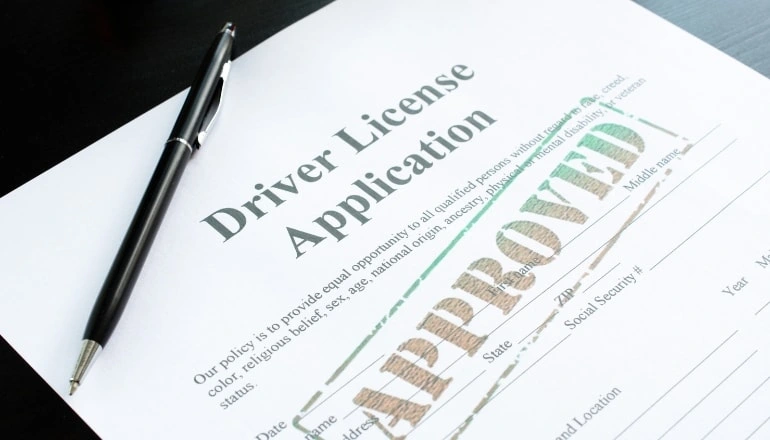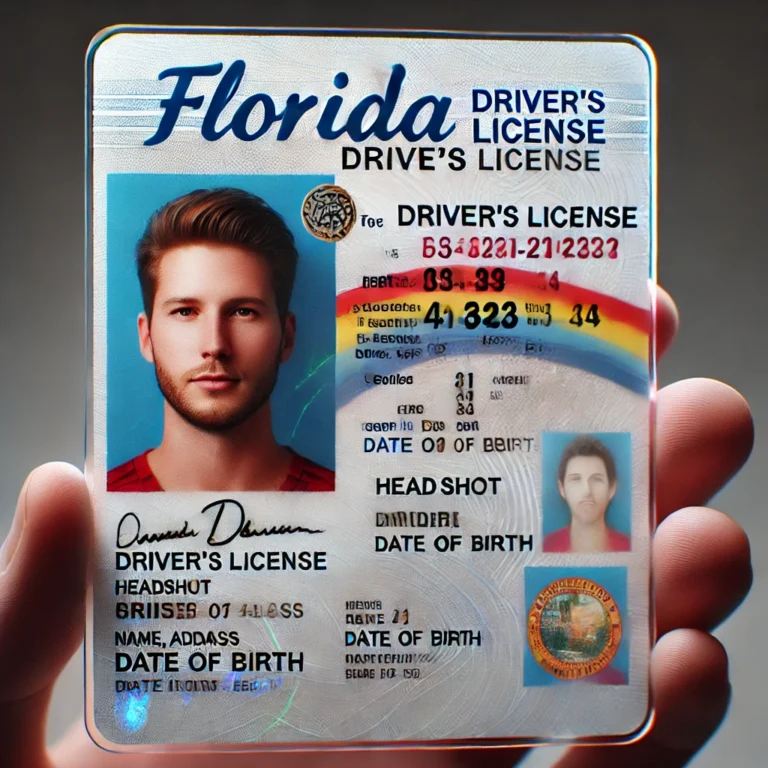Earning a Florida Driver’s License will give you full privileges to drive a car, by yourself, on the road. With a driver’s license you have absolute freedom behind the wheel. To get your driver’s license, you’ll have to meet the right requirements and qualifications, and provide specific documentations. Driver license service centers offer various types of licenses, including learner and intermediate licenses, and provide services for renewing, replacing, and checking the status of your license.
You’ll have to go through a few steps before you’re driving by yourself. This process starts with earning your learner and intermediate license.

Steps to Obtain a Florida Driver's License
Step 1: Enroll in a Florida Driver's Ed Class and Traffic Law and Substance Abuse Education Class
The first step in getting your driver’s license is to complete a driver’s education class. These classes are designed to teach soon-to-be drivers road etiquette, laws to follow, and road sign meanings. Along with completing a driver’s education course, you’ll need to pass a Traffic Law and Substance Abuse Education class. This is a requirement Florida institutes for all first-time drivers who have not been licensed in another state.
Step 2: Earn a Florida Learner's Permit
You must be at least 15 years old and a resident in the state of Florida to be qualified for a learner's permit. This is the first required step in getting your driver’s license. The learner's permit also has some restrictions attached to it. Since you’re still learning how to drive, you must follow these rules:
- You can only drive during the hours between sunrise and 10:00 PM at night.
- You must have a licensed driver sit in the passenger seat.
- The licensed driver must be at least 21 years old.
To get your learner's permit, you will have to provide specific documentation. When you visit your local DMV branch, you’ll have to provide:
- Proof showing you passed a Traffic Law and Substance Abuse Education class.
- A parental consent form.
- Social security number.
- Identification card.
- Proof of residency in the state of Florida.
Aside from providing documentation, you will have to pass a few exams. These are:
- Learner permit exam.
- Written test: this contains 40 multiple choice questions regarding road rules and road signs.
- Vision test.
- Hearing test.
When you hold onto your learner’s permit for one year, and do not make any traffic violations, you’ll be eligible for an intermediate license.
Step 2: Earn a Florida Intermediate License
The next step in getting your driver’s license is earning your intermediate license. To earn this restrictive license, you must be at least 16 years old and have had your permit for at least 1 year with a clean FL driving record. Age requirements are crucial here, as different regulations apply to various age groups. You will also be required to show documentation, such as:
- Parent or guardian must provide proof that you drove at least 50 hours.
- Proof of learner permit for one year.
- No traffic violations on your driving record.13
You will then be required to pass a certified driving test. You will be graded on defensive driving, following road etiquette, and understanding road signs. After earning your intermediate license, you will need to follow a few restrictions. If you’re 16 years old, you can drive between the hours of 6:00 AM and 11:00 PM. You can drive at any time of day or night if a licensed driver is with you who is at least 21 years old.
If you’re 17 years old or older, with your intermediate license, you can do everything a 16-year-old can do, plus you can drive until 1:00 AM without a 21-year-old licensed driver.
Step 3: Earn Your Florida Driver’s License
Now that you’ve spent the appropriate amount of time with your learner’s permit and your intermediate license, you’re finally ready for your Florida Driver’s License. To get your driver’s license, you’ll need to visit a nearby DMV branch and provide the right documentation.
The primary form of identification that you use must be either an original birth certificate or certified copy or a social security card. Once at the DMV you will be requested to pay the fee and get your photo taken.
Florida Department of Motor Vehicles Resources and Next Steps
Once you’ve obtained your Florida driver’s license, it’s crucial to stay informed about the resources and services offered by the Florida Department of Motor Vehicles (DMV). The DMV provides a range of services, including license renewal, replacement, and suspension information.
You can also access your driving record, register your vehicle, and find information on traffic safety and motor vehicle laws. Highway safety and motor vehicles regulations play a vital role in ensuring the protection of all drivers on the road. Staying updated with these resources ensures that you remain compliant with all regulations and can address any issues that may arise with your license or vehicle.
In this section, we’ll outline the next steps to take after obtaining your license, including how to access DMV driving license resources, understand license restrictions, and stay safe on the road.
 Live Chat
Live Chat



